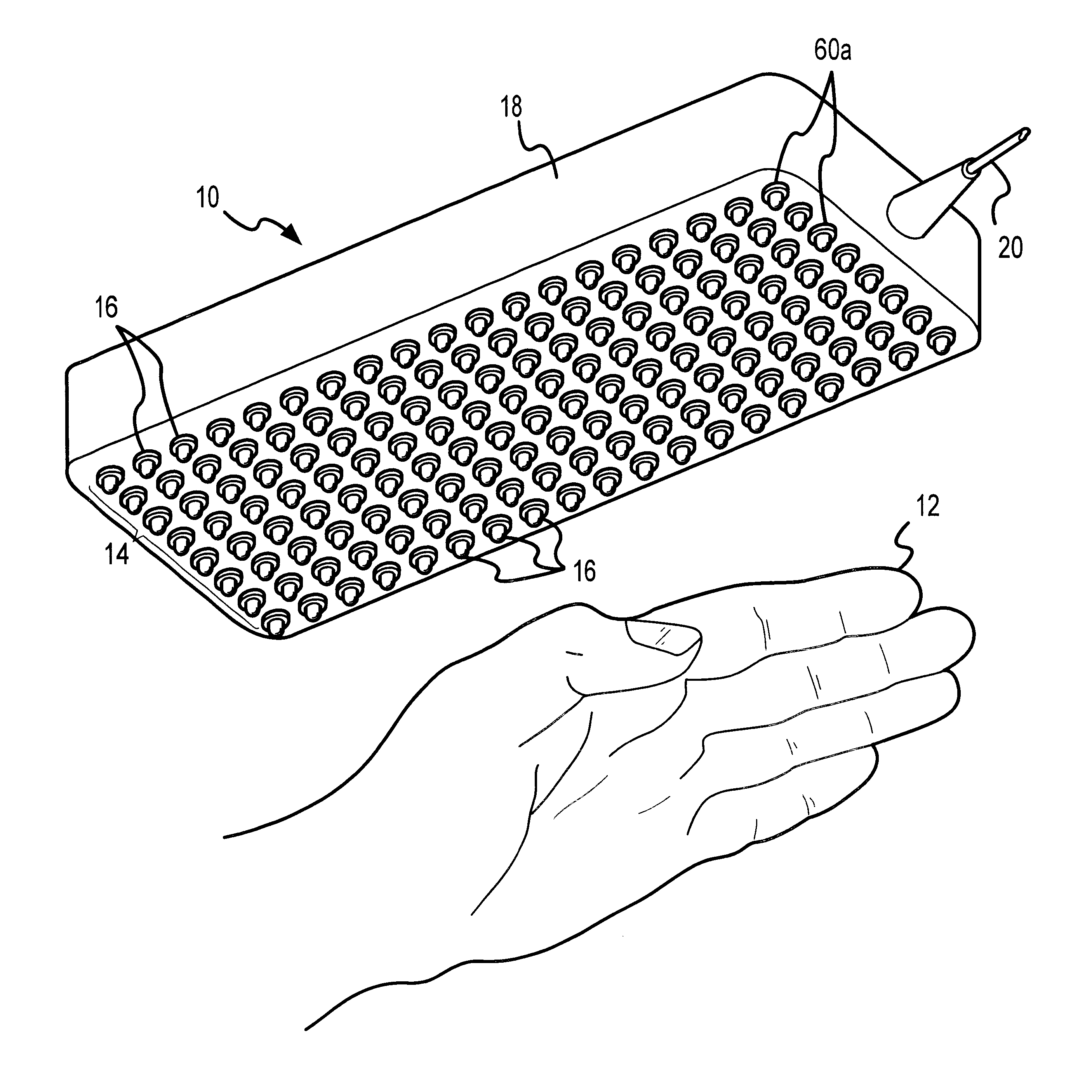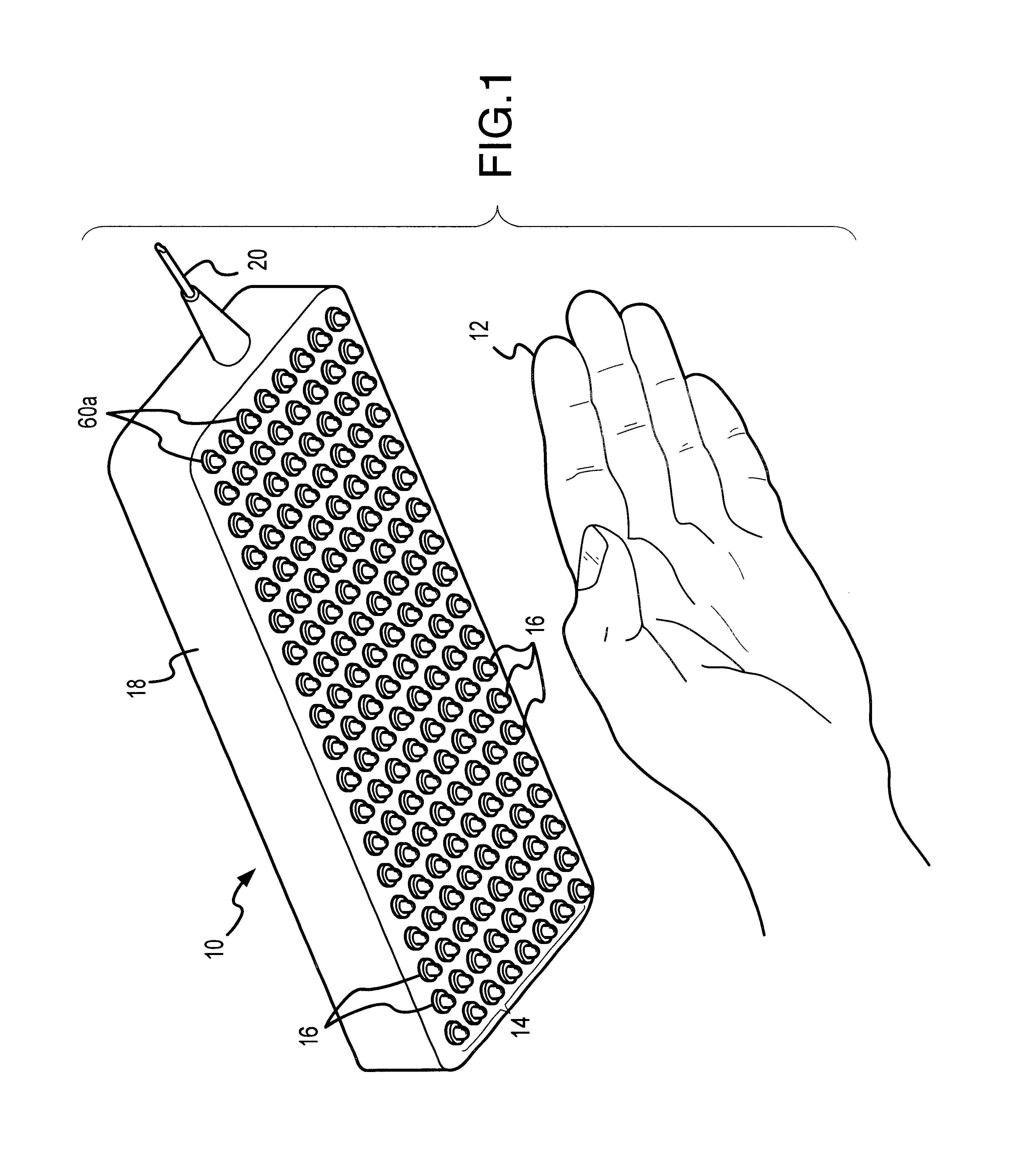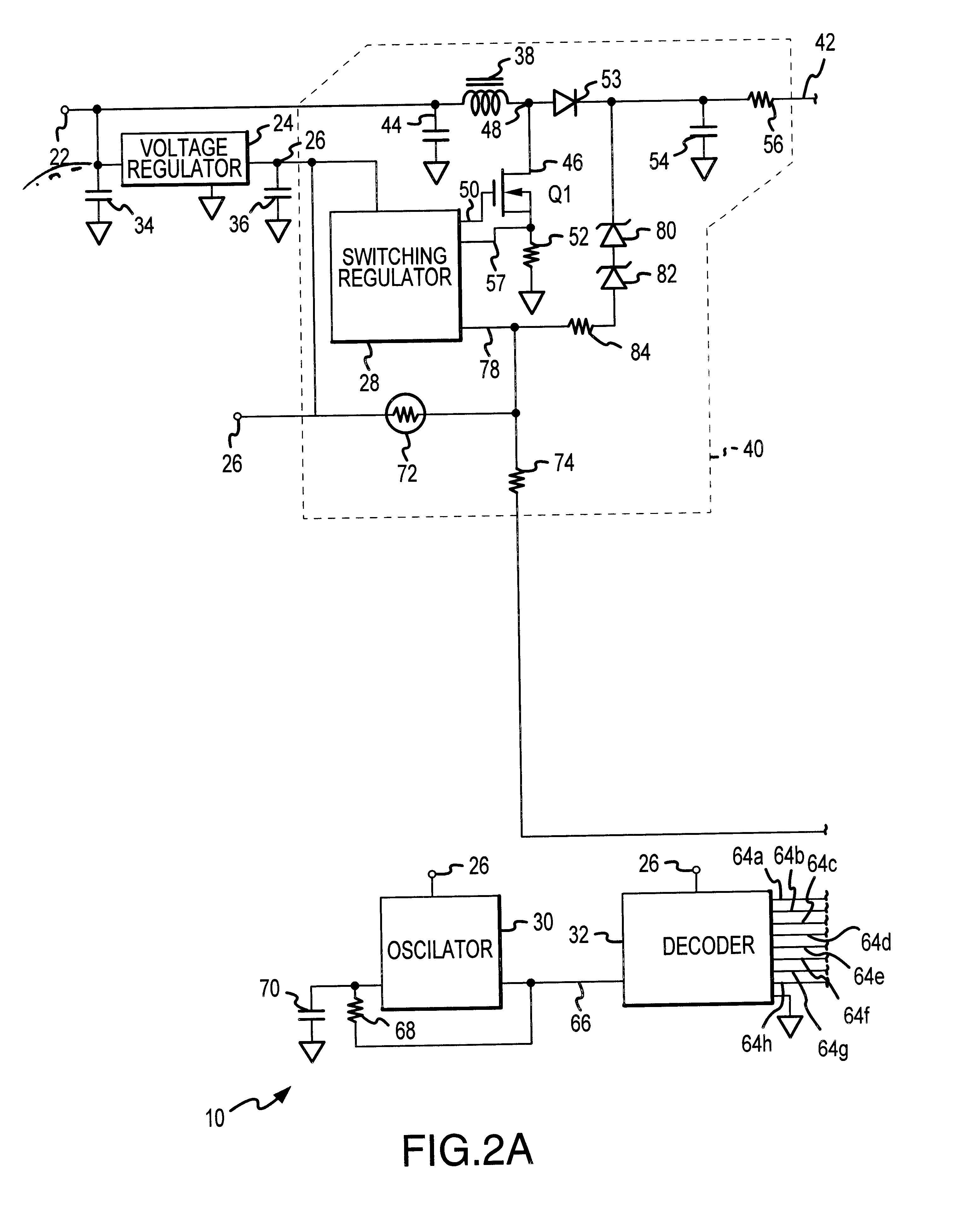Low level light therapy method and apparatus with improved wavelength, temperature and voltage control
a technology of low-level light therapy and wavelength, applied in radiation therapy, medical science, therapy, etc., can solve the problems of relatively small effective treatment area, relatively high cost of these types of lasers, and high cost of lasers. high-frequency lasers, etc., to achieve the effect of energy penetration
- Summary
- Abstract
- Description
- Claims
- Application Information
AI Technical Summary
Benefits of technology
Problems solved by technology
Method used
Image
Examples
Embodiment Construction
A photo-therapy or low-level light therapy (LLLT) device 10 which incorporates the present invention is shown in FIG. 1. The device 10 is used in providing light therapy treatment to tissue 12 of a patient (not otherwise shown). The device 10 includes an array 14 of photo-therapy radiation emitters, typically gallium arsenide (GaAlAs) infrared (IR) light emitting diodes (LEDs) 16. The GaAlAs IR LEDs 16 are mounted on a housing 18 of the device 10. The LEDs 16 may extend from the housing 18, as shown in FIG. 1, or the LEDs may be positioned in recesses formed in the housing and covered with a transparent label or cover, as is not shown. An electrical power cord 20 extends from the housing 18 to connect the device 10 to an external power source (not shown), such as a commercial AC mains power outlet, an AC / DC converter, a battery pack, an automobile cigarette lighter type outlet, or other power source.
The photo-therapy or LLLT device 10 is used by placing it near or in contact with th...
PUM
 Login to View More
Login to View More Abstract
Description
Claims
Application Information
 Login to View More
Login to View More - R&D
- Intellectual Property
- Life Sciences
- Materials
- Tech Scout
- Unparalleled Data Quality
- Higher Quality Content
- 60% Fewer Hallucinations
Browse by: Latest US Patents, China's latest patents, Technical Efficacy Thesaurus, Application Domain, Technology Topic, Popular Technical Reports.
© 2025 PatSnap. All rights reserved.Legal|Privacy policy|Modern Slavery Act Transparency Statement|Sitemap|About US| Contact US: help@patsnap.com



